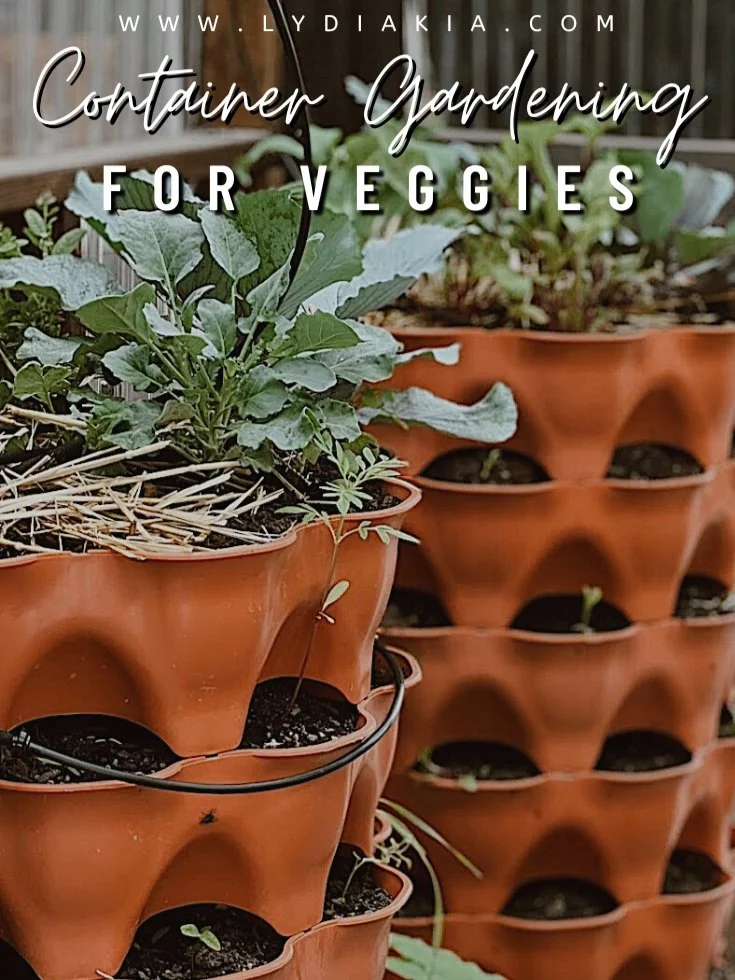Home Gardening Basics
Starting your own thriving home garden is super easy as long as you know about healthy soil, composting, and maximizing your harvest. In this post, we will cover these home gardening basics so that you can grow food sustainably…
Home Gardening Basics
Types of Soil
The first thing you need to make sure of is that you have healthy soil that your plants will be happy in. So before you begin, go outside and check the soil in the area you want to plant your garden and make sure it’s plant-friendly.
Some examples of “bad” soil are:
Compacted Soil
This kind is dry, crumbly, and doesn’t hold water at all.
Clay
This kind of soil holds too much water and is very tightly packed and hard.
Sand
This is actually good if you are looking to grow succulents/cacti. However, it’s not a healthy choice for growing much else.
The kind of soil you really want to see is the dark, rich soil called loam. Loamy soil is easy to dig through, is moist, and full of all the minerals and nutrients that growing plants need. Loam is great for plants because it holds just enough moisture and isn’t so compact that the plants have to fight against it to grow.
If you find that none of your soil is this way, it’s actually very easy to turn poor soil into healthy soil! One of the best ways to do this is to start introducing compost into your gardening area. You can use several methods to compost, but my favorite way is vermicomposting. Vermicomposting not only takes advantage of the natural process of how organic matter decomposes to enrich the soil, but it is also naturally aerated and fertilized by worms.
However you choose to compost, the benefits are amazing. You will find that you are throwing away less waste and that your garden will grow bigger, stronger, and more delicious!
Testing Your Soil
If you think your soil is perfect for your garden, it can be a good idea to do a quick soil test to make sure there are no toxins in it that you don’t know about.
Unfortunately, because of all the chemicals involved with developed areas, your soil could be toxic due to runoff, paint, emissions, etc.
However, if you find that your soil IS toxic, many unique plants can detox your soil naturally. Sunflowers are an excellent option for this, and you can also try growing Indian Grass, Indian Mustard, Poplar Trees, and White Willows.
This process can take quite a while, so if you just want to get your garden started right away, you can build a raised garden very easily. With a raised garden, you can have beautiful, healthy soil right off the bat and set it up exactly how you want to!
Maximizing Your Harvest
Many fruits and veggies are very easy to grow and propagate. You can plant whole bulbs and tubers, and you can also plant individual shoots from many different things you might already have in your kitchen. For example, to start growing sweet potatoes, you can use a glass of water to get some roots started, then either bury it whole or cut out the individual “eyes” and plant them all separately. This can also work for garlic, meaning you can plant single cloves or the whole bulb.
Depending on the plants you want to grow, you can make your garden more efficient by “stacking” shallow-rooted plants on top of plants that grow underground—like the sweet potatoes!
Another way to maximize your space and your harvest is to be picky about what you pick. When you start to see that your fruits and veggies are ready to harvest, start by only taking the biggest ones. This allows smaller plants to keep growing while still providing you with all the yumminess you’ve been waiting for!
Propagating your plants can also get a bigger and bigger harvest every year. Any plant that you have that has visible nodes you can cut off can be propagated. This can vary by plant, but for the most part, you can follow these basic steps:
Cut a node
Root it in water, rooting compound, or a potato
Plant in healthy soil
Give it enough water and sunlight
Home gardening can seem intimidating, but if you start with the basics, you’ll have a perfect foundation to build a thriving garden and reap all the rewards that come with it!
LOVE THIS STUFF? Get my free self care guide







